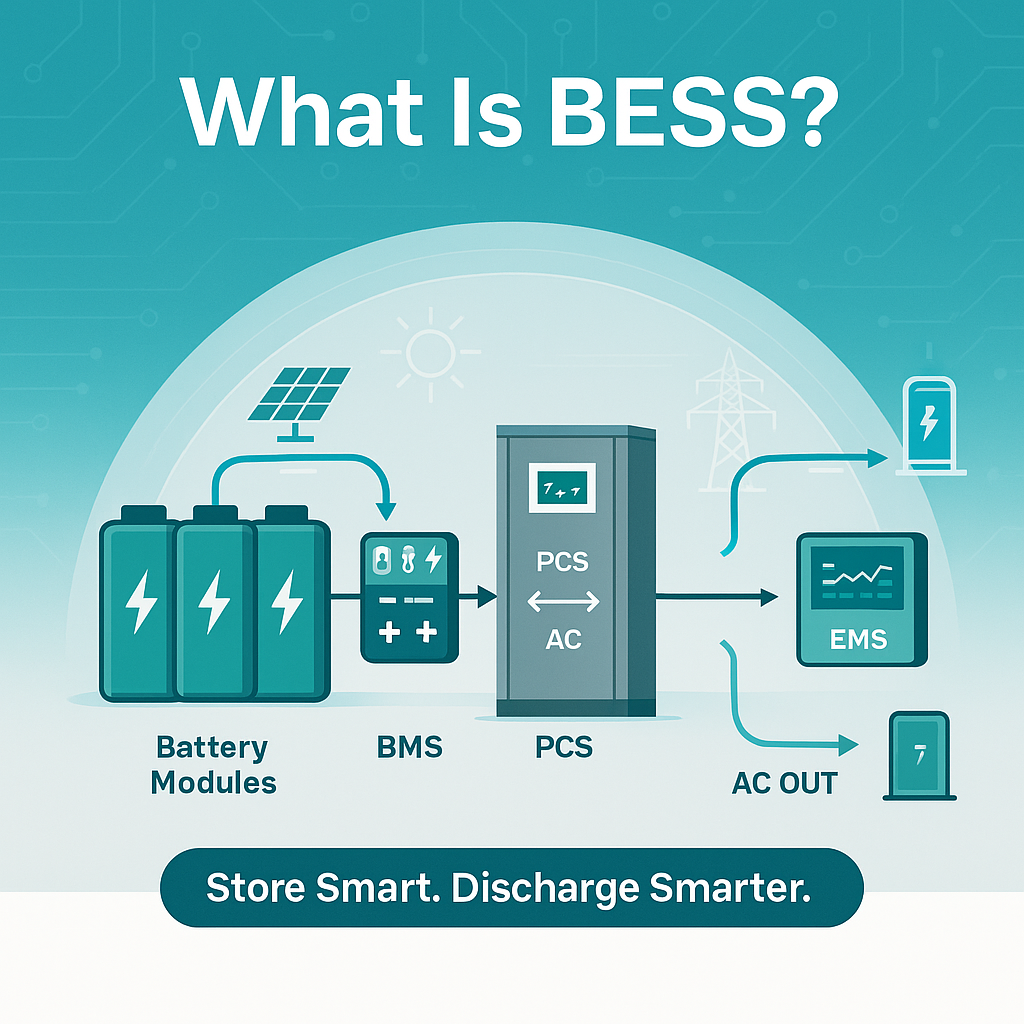What is BESS?

A Battery Energy Storage System (BESS) is a technology that stores energy from the grid or a renewable source and discharges it at a later time to provide power. It acts as both a buffer and a stabilizer within power systems, enabling time-shifting of energy, grid reliability, load balancing, frequency regulation, and backup supply.
At its core, a BESS comprises four critical components:
- Battery Modules – electrochemical cells that store and release energy.
- Battery Management System (BMS) – monitors cell-level voltage, temperature, and health to ensure safe operation.
- Power Conversion System (PCS) – includes bi-directional inverters that convert AC ↔ DC, enabling grid interaction.
- Energy Management System (EMS) – digital controller that orchestrates when and how the system charges/discharges.
BESS systems scale from kilowatt-hour (kWh) residential systems to multi-megawatt-hour (MWh) or gigawatt-hour (GWh) utility-scale installations.
How Does BESS Work?
1. Charging Cycle (AC to DC Conversion)
- Source: Power from renewables (solar/wind) or the grid enters the system as alternating current (AC).
- Conversion: A bi-directional inverter (part of PCS) converts AC to direct current (DC) to charge the batteries.
- Storage: Batteries store the energy in chemical form via electrochemical reactions.
2. Energy Management & Monitoring
- The EMS constantly evaluates grid conditions, electricity prices, demand forecasts, and weather data.
- It sends commands to BMS and PCS to optimize charge/discharge cycles.
- The BMS ensures thermal safety, equal cell balancing, state of charge (SoC), and depth of discharge (DoD) thresholds are respected.
3. Discharging Cycle (DC to AC Conversion)
- When demand rises or grid frequency deviates, EMS instructs the PCS to discharge.
- PCS converts stored DC energy back to AC.
- The energy is then routed to local loads, EV chargers, or exported to the grid, depending on configuration.



